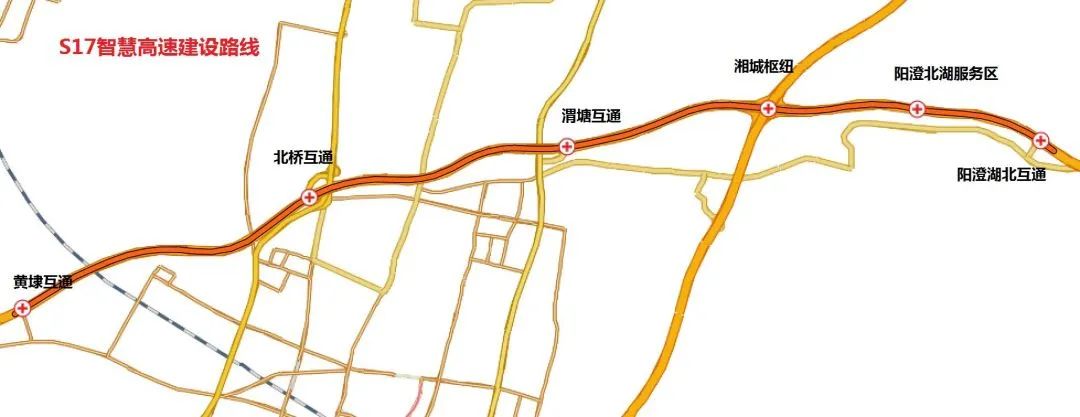
The launch event of the National Key R&D Plan Autonomous Road Traffic Control and Safety Project was held on December 28 in Wuzhong District, Suzhou City.
The "Device-Network-Cloud Integrated Road Traffic All-Element Intelligent Control Technology" and "Autonomous Road Traffic System Safety Assurance Technology" projects under the national key research and development plan have been officially signed and launched. This project is led by the Road Traffic Safety Research Center of the Ministry of Public Security and the Traffic Management Science Institute of the Ministry of Public Security. At the same time, the autonomous driving traffic regulations compliance training (Suzhou) base project was also unveiled today.
Inquiries on this site found that China’s first holographic perception smart highway project that meets the vehicle-road collaborative autonomous driving level has been put into use in Suzhou. The project covers the Su-Taiwan Expressway S17 (Huangdai Interchange-Xiangcheng Hub) and the Shanghai-Yiyi Expressway S48 (Xiangcheng Hub-Yangcheng Hubei Interchange), with a total length of 56 kilometers. Among them, the road section capable of L4 level autonomous driving testing is 6.5 kilometers, which is located on the one-way section from Weitang Interchange to Xiangcheng Hub.

sensing equipment such as lidar, millimeter wave radar, camera, roadside antenna RSU, etc. have been deployed at 55 points to create Holographic sensing road sections and ramp (interchange) sensing road sections. The project passes through Beiqiao Interchange, Weitang Interchange, Xiangcheng Hub, and Yangcheng Beihu Service Area. The subdivided scenes along the line include toll stations, ramps, service areas, etc.
The holographic sensing road section is located on a 6.5-kilometer one-way section from Weitang Interchange to Xiangcheng Hub, with the direction from west to east. In this section of the road, two information prompt screens are set up, located at the entrance and middle of the holographic main road. In addition, laser radar, cameras and other equipment are deployed at an average of every 230 meters at each point. At the same time, a series of antenna RSUs are also set up on the roadside, with a distance of approximately 460 meters between each other. The sensing road section refers to a ramp (interchange) equipped with a series of devices that can sense vehicles entering and exiting the test road section. The main equipment of each sensing road section includes cameras, roadside antenna RSU, and millimeter wave radar. The function of these devices is to monitor and identify vehicles through different technical means, thereby achieving real-time perception and monitoring of the vehicle's driving status. Cameras can capture images and videos of vehicles, roadside antennas (RSUs) can receive and send vehicle communication data, and millimeter-wave radar can be used to measure information such as distance and speed of vehicles. Through the collaborative work of these devices, the sensing road section can accurately monitor and identify vehicles entering and exiting the test road section, providing important data support for traffic management and safety.
Photo source Pexels
 The Ministry of Industry and Information Technology and four other departments jointly issued a notice titled "About the Development of Intelligent Networked Vehicles" Notice on the Pilot Work on Access and Road Access. The notice pointed out that the pilot program for intelligent connected vehicle access and on-road access is to accelerate the promotion and application of intelligent connected vehicle products and ensure their safe operation. At the same time, the notice also proposes support for advanced autonomous driving technologies and products that have been piloted and proven, and plans to further promote them.
The Ministry of Industry and Information Technology and four other departments jointly issued a notice titled "About the Development of Intelligent Networked Vehicles" Notice on the Pilot Work on Access and Road Access. The notice pointed out that the pilot program for intelligent connected vehicle access and on-road access is to accelerate the promotion and application of intelligent connected vehicle products and ensure their safe operation. At the same time, the notice also proposes support for advanced autonomous driving technologies and products that have been piloted and proven, and plans to further promote them. The above is the detailed content of my country launches key research and development plan: road traffic control and safety autonomous project. For more information, please follow other related articles on the PHP Chinese website!
 The eight most commonly used functions in excel
The eight most commonly used functions in excel
 How to round in Matlab
How to round in Matlab
 What are the web servers?
What are the web servers?
 The difference between static web pages and dynamic web pages
The difference between static web pages and dynamic web pages
 What is the role of sip server
What is the role of sip server
 How to solve the problem that document.cookie cannot be obtained
How to solve the problem that document.cookie cannot be obtained
 How to open iso file
How to open iso file
 How to comment code in html
How to comment code in html




